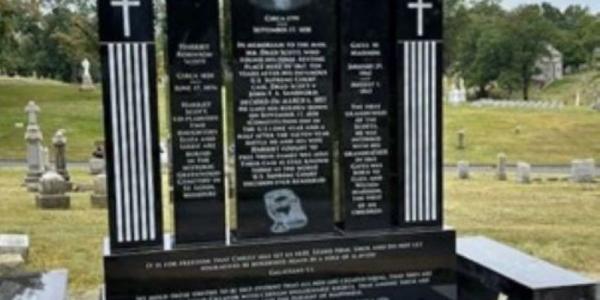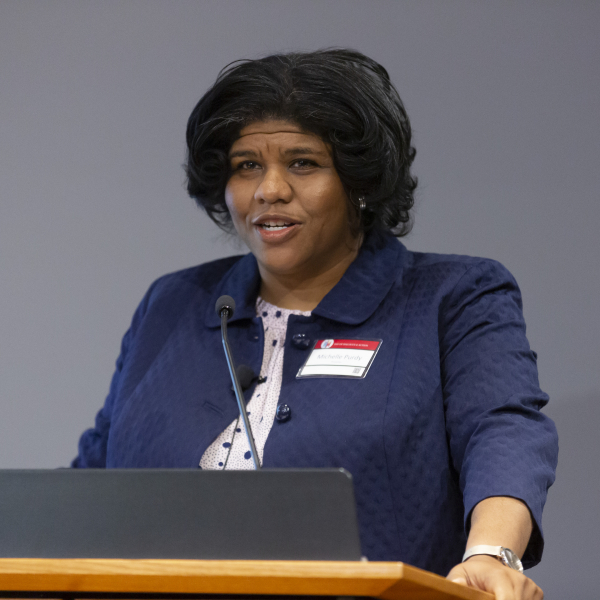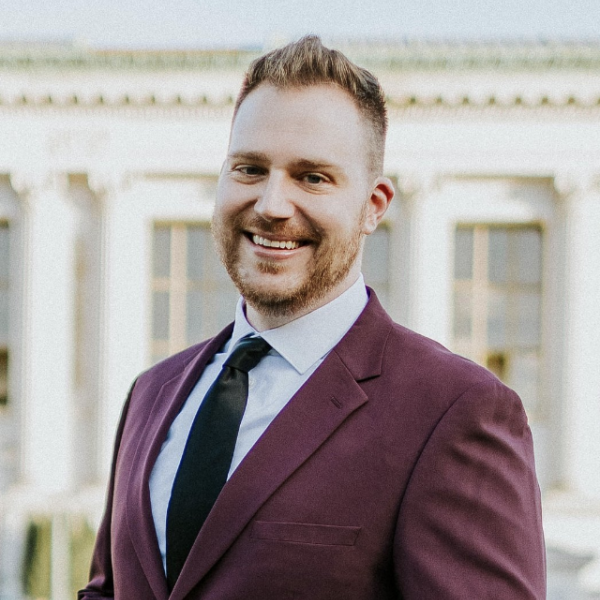AFAS Professor, Dr. Kelly Schmidt, is currently teaching an experiential learning course entitled "St. Louis, Black History, Culture and Civic Engagement". The course invites students to learn about Black history in St. Louis by participating in it. Assignments and class trips encourage them to see, hear, touch, and taste Black history beyond the classroom, and to share what they discover with others.
Three days after unveiling a new memorial marker commemorating Dred Scott, renowned for his 11-year legal battle against slavery that culminated in the notorious Dred Scott Decision—a pivotal event leading to the Civil War—Lynne Jackson, the great-great-granddaughter of Dred and Harriet Scott and President/Founder of the Dred Scott Heritage Foundation, addressed students in the Department of African and African American Studies (AFAS) course titled ‘St. Louis Black History, Culture, and Civic Engagement.’ During the lecture on September 30 at Calvary Cemetery in St. Louis, Jackson delved into the history of her distinguished ancestors and her ongoing efforts to preserve their legacy. Sharing a childhood photo of her family at the ancestors' grave, she recounted how Edward Dowling, SJ, had located Dred Scott's previously unmarked burial site 90 years after his death, stating, “This is a modest headstone, but if someone wants to do more someday, they’ll know where he lies.” Reflecting on her journey, Jackson added, “That person turned out to be me.”
True to its title, the course encourages students to immerse themselves in St. Louis Black history actively. Through assignments, class trips, and engagement with Black heritage and preservation organizations like the Dred Scott Heritage Foundation, the Greenwood Cemetery Preservation Association, and the Scott Joplin State Historic Site, students go beyond classroom learning. They are currently undertaking community-engaged projects to share the untold stories of Black history in St. Louis with the wider public.
One student group is actively working to elevate Dred Scott's legacy by nominating his burial site and memorial to the National Park Service’s National Underground Railroad Network to Freedom Program. This program honors and preserves sites, programs, and facilities linked to individuals who challenged enslavement through escape, flight, or those who interpret and make accessible Underground Railroad history. Another group is building on previous research from the ‘Slavery and Public History’ AFAS course to nominate the General Daniel Bissell House in north St. Louis to the Network to Freedom. They are uncovering and sharing the stories of those who escaped enslavement from the Bissell’s Franklinville plantation. A third group is nominating the WashU & Slavery Project for its efforts in researching and interpreting the stories of freedom seekers integral to Washington University’s and greater St. Louis’s history.
These projects, undertaken in collaboration with community stakeholders, imbue students with a profound sense of the significance and relevance of their work in the contemporary context. Joel Thomas (’25), a student involved in the projects, shares, "I'm learning about the deep and rich black history of St. Louis and the intricate process of obtaining freedom in a corrupt world. This nomination process to the Network of Freedom has allowed me to immerse myself in the history surrounding me, leading me to visit graveyards, attend memorials, and process primary documents. Working with Ms. Lynne Jackson has provided me with boundless information on the background and work of Dred and Harriet Scott, and the opportunity wouldn't have been possible without Professor Schmidt and WashU."
In the latter part of the semester, students will collaborate with St. Louis County Parks and Recreation to research and design three interpretive signs that narrate the stories of African American St. Louisans in the military at Jefferson Barracks. These signs are intended for installation at the Buffalo Soldiers Shelter at Jefferson Barracks Park.





